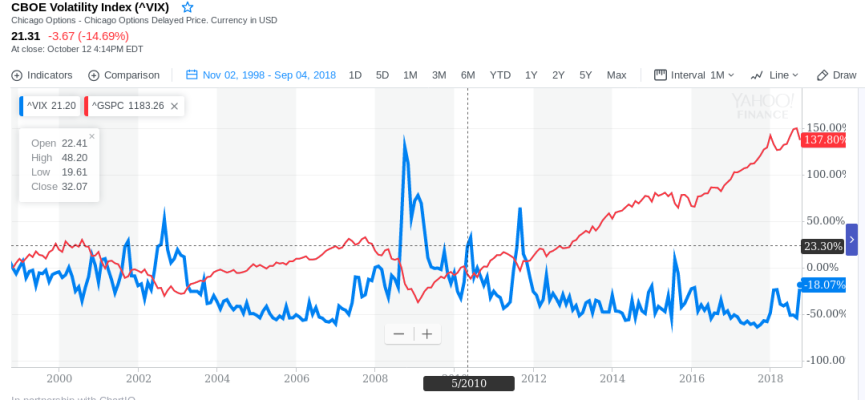1. But are the economic fundamentals anything more than just a bunch of smoke and mirrors at this point?
The last leg of this overinflated bubble was a result of corporate tax cuts, which were completely unnecessary when record profits were already being posted. It was a gift, and is providing current year growth. Without it, we likely would be seeing flat earnings, or minimal growth. What it means for 2019 is that we likely will not see growth in corporate profits - it was a one-time boost and now that it's built in, we're not going to see the thrust it's given to earnings growth in 2018. Further, stock market gains and a peak in the housing market has made a good swath of the population "feel" extremely wealthy.
It's fairly easy to see that the housing market has peaked for this cycle. Go outside and look around your neighborhood - you'll see an abundance of houses on the market just within a mile radius. Lots of folks are wanting to sell - they see it's at a peak, interest rates are rising, and supply is now eclipsing demand. In NYC, folks are all racing to the exits -
https://www.businessinsider.com/nyc...seen-since-financial-crisis-streeteasy-2018-9
As for the stock market, maybe we've seen the peak of this bull cycle, maybe not. However, the wild volatility we are seeing is reminiscent of what takes place near the end. Regardless, there are a number of things taking place in this market which says it's a time for extreme caution, protecting gains, and not becoming complacent. Retirees who are sitting with their 60/40 portfolios (or even higher equity allocations) might want to take a step back and consider just how much risk they are taking. Should interest rates continue higher and the stock market head lower, both the equity and fixed income portions of the portfolio are going to decline in value.
2. While yield curve inversion has preceded the past several recessions, it is not required that inversion happen for us to have a recession. Recessions ultimately come about because of consumer and investor perception - no different than economic expansions. It boils down to optimism and pessimism.
We know that the Fed is extremely likely to continue raising interest rates over the next 12 months. As rates are continuing to push higher, this will gradually siphon money out of equities and in to fixed income. The higher interest rates go, the heavier it is going to weigh on equities.
On the economic front, as interest rates continue rising, it is going to slow economic activity. Housing and auto payments will cost more to those who finance (which is most purchasers). It will cost more for businesses to finance operations, leading to higher prices for the consumer. Additionally, with new tariffs, producers and manufactures are going to be passing the bulk on to consumers, further raising prices. With higher prices, consumers will cut back on their purchasing. Bottom line, inflation is going to continue rising. Though the Fed likes to say that we have about 2% inflation and they don't see it out of control, it actually is well above 2% for most households. The big ticket items households purchase weigh more heavily but are not included in government inflation calculations. Just wait until 2019 open enrollment for healthcare insurance next month and there's another 20% to 30% increase for most folks. College tuition for the kids - we all know those are out of control, rising about 5% a year at most schools. The list goes on.



